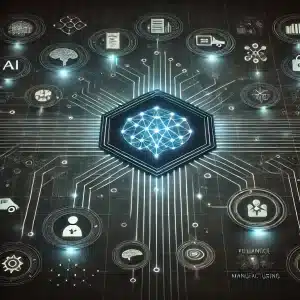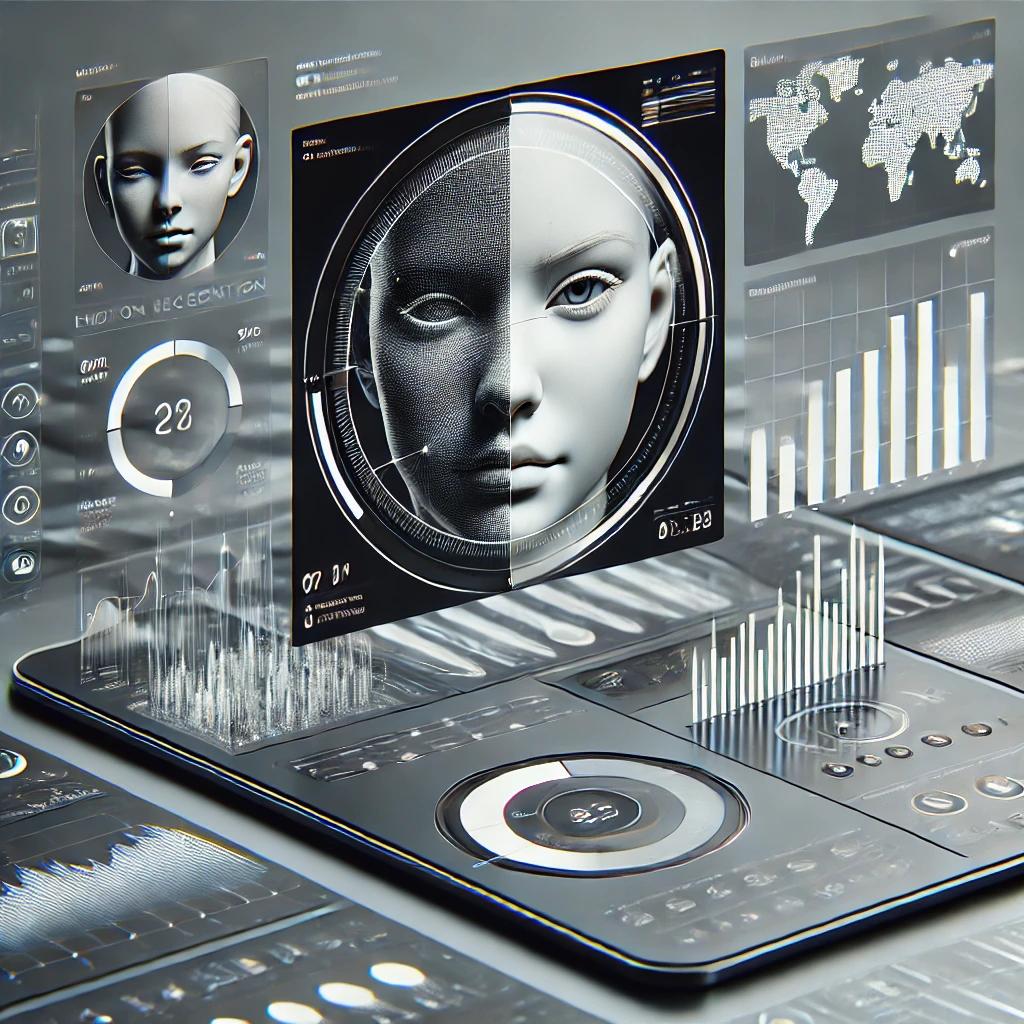Artificial Intelligence (AI) is continuously transforming the world, and 2024 promises significant advancements and trends in this field. From generative models to explainable systems, AI technologies are progressively shaping various industries, offering innovative solutions and tools that streamline processes and create new possibilities. This article delves into the latest developments and trends in artificial intelligence, exploring how they are evolving and impacting different sectors.
What are the Latest Developments in Artificial Intelligence?
What Breakthroughs Have Been Made in 2024?
AI in 2024 is seeing remarkable breakthroughs that set new benchmarks for the industry. This includes:
- Generative AI: AI models are creating high-quality content autonomously, such as images, music, and text.
- Natural Language Processing (NLP): AI’s understanding of human language has improved, allowing for more accurate, context-aware interactions.
- Advanced neural networks are helping drive the most recent developments, enhancing data analysis and predictive capabilities.
Which AI Models Are Leading the Way?
The latest AI models in 2024 include advanced versions of generative AI, such as GANs (Generative Adversarial Networks) and transformer-based models like GPT-4. These models are pushing the boundaries of what AI can create and understand, from generating realistic multimedia content to comprehending complex human language. Moreover, multimodal AI models that combine data from various sources like text, images, and voice are leading the way, showcasing enhanced capabilities in computer vision and NLP integration, thus offering a holistic approach to artificial intelligence applications.
How Are AI Tools Evolving?
AI tools in 2024 are getting easier and more versatile to be available to even non-expert users. Examples of Evolving AI Tools include:
- AI Software for Data Analysis: Helping businesses process large datasets efficiently.
- AI-Powered Creative Tools: Helping in content creation related to art, music, and writing.
- Conversational AI systems: Improving customer experience with intelligent, automated conversations.These advancements are opening up broader adoption of AI across industries.

How Does Generative AI Work?
What is Generative AI?
Generative AI refers to a subset of artificial intelligence that focuses on creating new data that is similar to existing data. This type of AI uses models trained on vast datasets to generate content, including text, images, music, and more. The most notable generative AI models are neural networks designed to understand and replicate the patterns seen in the input data. These models are capable of producing highly realistic and creative outputs, making them invaluable in various creative and analytical processes.
What Are the Applications of Generative AI?
Generative AI is now being applied in many sectors, including:
- Creative Industries: Producing artistic and musical works along with written content to inspire creative thinking and efficiency.
- Data Augmentation: Improving data accuracy and optimizing machine learning models.
- Healthcare: Modeling biological processes and facilitating drug discovery.
- Finance: Simulating market conditions to support decision-making.
How Are Generative AI Models Trained?
Training generative AI models involves feeding them with extensive datasets to learn patterns and structures. These models, often built on advanced architectures such as transformer networks or GANs, are trained using techniques like supervised learning, unsupervised learning, and reinforcement learning. The process requires significant computational power and resources, often involving powerful GPUs and distributed computing platforms. Fine-tuning is critical for achieving high-quality outputs, and ongoing AI research plays a vital role in refining these models’ accuracy and efficiency.
Explainable AI: Enhancing Transparency
What is Explainable AI?
Explainable AI (XAI) is a branch of artificial intelligence focused on making AI systems’ decision-making processes more transparent and understandable to humans. Unlike traditional AI models, which often operate as “black boxes” with opaque inner workings, explainable AI provides insights into how decisions are made, ensuring that users can trust and validate the AI’s outcomes. This approach enhances the accountability and reliability of AI technologies, particularly in critical applications like healthcare, finance, and autonomous systems.
Why is Explainable AI Important?
Explainable AI is crucial because it addresses the trust and accountability issues associated with AI adoption. As AI systems become more integrated into decision-making processes, understanding how these systems arrive at their conclusions is essential for ensuring accuracy, fairness, and ethical use. Explainable AI helps stakeholders identify and correct biases in AI models, comply with regulatory requirements, and make informed decisions based on transparent AI-driven insights. It ultimately facilitates responsible AI development and fosters public trust in artificial intelligence technologies.
What Are Some Examples of Explainable Artificial Intelligence Technologies?
- LIME: Local Interpretable Model-agnostic Explanations.
- SHAP: SHapley Additive Explanations.
- Decision Trees: Providing inherent transparency in how decisions are made.
What is the Impact of AI on Different Industries?
How is AI Transforming Healthcare?
AI is revolutionizing healthcare by enhancing diagnostics, personalizing treatment, and optimizing operational efficiencies. Advanced AI models analyze medical images with high precision, assisting in early disease detection. Predictive AI is being used to forecast patient outcomes and tailor personalized treatment plans based on extensive data analysis. AI-powered tools also streamline administrative tasks, reduce errors, and improve patient management, making healthcare delivery more efficient and effective.
What Changes is Artificial Intelligence Bringing to Finance?
The finance sector is experiencing profound changes due to AI, particularly in risk management, fraud detection, and personalized financial services. AI systems analyze vast amounts of financial data to identify patterns indicative of fraudulent activities, enhancing cybersecurity. Predictive AI models assess market trends, enabling better investment strategies and risk mitigation. Additionally, AI-driven chatbots and robo-advisors offer personalized financial advice, improving customer experiences and making financial services more accessible.
What Impact Does AI Have on Manufacturing?
In manufacturing, Artificial Intelligence is driving significant improvements in efficiency, quality control, and predictive maintenance. AI-powered robots and automation systems enhance production line performance, reduce human error, and increase output. Computer vision and AI are used to inspect products for defects in real time, ensuring high-quality standards. Predictive maintenance AI models forecast equipment failures before they occur, minimizing downtime and maintenance costs, and optimizing the supply chain operations.
What Are the Key Trends in AI Development?
What Trends Should We Expect in 2024?
Key AI trends in 2024 include the rise of multimodal AI, which combines different data types to create more comprehensive models. The continued progress in natural language processing and understanding is expected to produce more sophisticated conversational AI systems. Additionally, the democratization of AI makes advanced tools available to a broader audience, empowering more industries to leverage AI capabilities. Another significant trend is the focus on responsible AI, ensuring ethical and transparent AI applications across various domains.
How Does the Democratization of AI Influence Development?
The democratization of AI refers to making AI tools and technologies accessible to wider audiences beyond just data scientists and AI experts. In 2024, this trend is accelerating AI adoption across numerous industries, allowing businesses and individuals to harness the power of AI for diverse applications. User-friendly AI platforms and no-code or low-code solutions lower the barrier to entry, enabling more people to develop and use AI-driven solutions, fostering innovation, and accelerating overall AI development.
What Are the Implications of Multimodal Artificial Intelligence?
Multimodal AI brings together various types of data that enhance the AI’s understanding of complex contexts. This results in the following:
- Healthcare: More accurate patient diagnostics.
- Customer Service: Better interaction with subtle, context-aware AI responses.
- Autonomous Systems: Improved environmental perception for safer and more effective systems.
Conclusion
As we enter further into 2024, AI is expected to continue to lead innovation in all industries as it offers solutions that improve efficiency, enhance creativity, and transform the way we interact with technology. From generative AI models, which produce high-quality content, to explainable AI systems, which build trust, the future of AI is both promising and transformative. With the increasing availability of AI tools, this opportunity will be presented not only for businesses but also for each individual to explore and unlock for various purposes.
FAQs
Q1: What are the biggest AI breakthroughs in 2024?
A1: Key advancements include the rise of generative AI models that can create content on their own, the development of multimodal AI that integrates multiple data types, and the improvements in natural language processing for more sophisticated interactions.
Q2: How does Generative AI work?
A2: Generative AI uses neural networks trained on vast datasets to learn patterns and generate new content. These models create outputs like text, images, and music by replicating the learned patterns from input data.
Q3: Why is Explainable AI important?
A3: Explainable AI ensures that AI systems’ decisions are transparent and understandable, fostering trust and accountability, especially in critical areas like healthcare, finance, and autonomous systems.
Q4: What is Multimodal AI?
A4: Multimodal AI integrates multiple types of data (e.g., text, images, audio, video) to create more versatile and powerful AI models that can understand complex contexts and provide more accurate responses.
Q5: How is AI impacting healthcare?
A5: AI is transforming healthcare by improving diagnostics, personalizing treatment plans, and optimizing operational efficiency, including predictive models that forecast patient outcomes.



